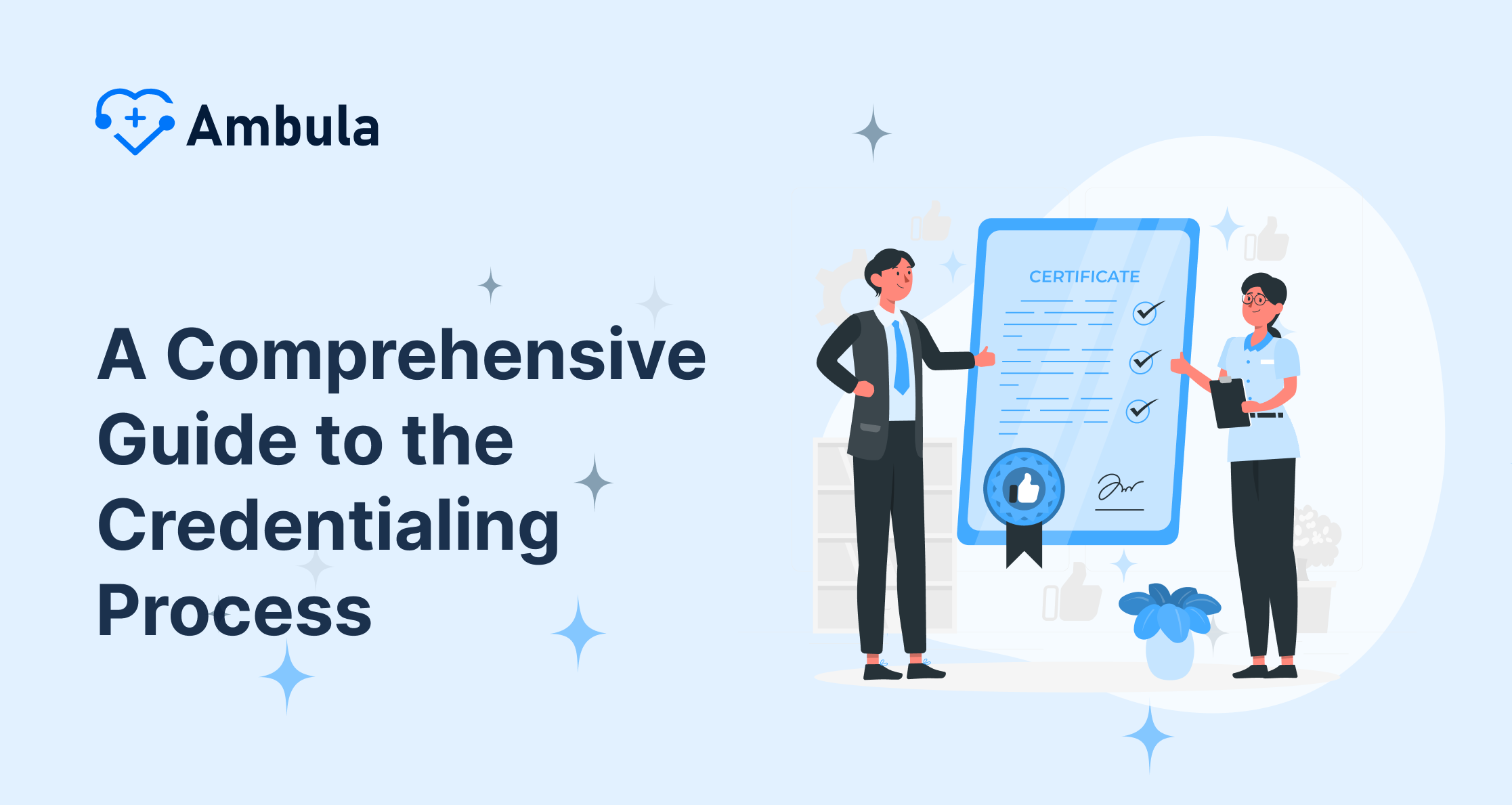Credentialing is a critical process for healthcare providers who wish to establish and maintain a successful practice. It’s the first step in setting up an effective revenue cycle management system, ensuring that providers can bill insurance companies for services rendered. Becoming an in-network provider means adhering to specific guidelines set by insurance companies, which can lead to a broader client base and better reimbursement rates. This article will guide you through the comprehensive process of getting credentialed with insurance companies, highlighting the essential steps and strategies to optimize your approach.
What is Credentialing?
Credentialing is the process by which insurance companies validate the qualifications of healthcare providers to ensure they meet specific standards before allowing them to participate in their network. This process is crucial for compliance and establishing trust with patients who rely on their insurers’ vetting processes. Credentialing involves two main phases: verifying the provider’s credentials and entering into a contractual agreement that defines the terms of engagement.
Getting Started with Credentialing
Preparation for Credentialing
Credentialing starts long before you submit any applications. It involves gathering all necessary documentation that proves your qualifications and compliance with industry standards. These documents typically include your medical license, proof of education and training, board certifications, professional liability insurance policies, and any other relevant certifications. Additionally, having an updated profile in the Council for Affordable Quality Healthcare (CAQH) database is crucial, as many insurers use this resource to streamline credentialing.
Choosing the Right Insurance Companies
Selecting which insurance companies to work with is a strategic decision that depends on several factors, including the geographic location of your practice, the demographics of the patient population you wish to serve, and the specialties you offer. Start by conducting local market research to determine which insurers have a strong presence in your area. Networking with other healthcare providers or consulting with a practice manager can also provide insights into which insurance networks might benefit your practice most.
Step-by-Step Credentialing Process
Credentialing with insurance companies involves a meticulous process that can significantly impact a healthcare provider’s ability to bill through insurance and thus affect revenue streams. Here’s a more detailed look at each step:
1. Preparation
Before beginning the credentialing process, providers need to gather all necessary documentation that will be required by insurance companies. This includes:
- Personal Information: Full legal name, date of birth, Social Security number, and contact details.
- Professional Qualifications: Copies of medical degrees, certificates of residency, fellowships, and any additional certifications.
- Licensure: State medical licenses, DEA certificates, and any other relevant licenses.
- Work History: Detailed CV including all places of employment, roles, and dates.
- Proof of Identity and Work Authorization: Passport, driver’s license, or other government-issued ID.
- Malpractice Insurance: Current policy details including coverage amounts and any claim history.
- CAQH Profile: Enrollment and completion of the CAQH (Council for Affordable Quality Healthcare) profile, which standardizes the data collection process for credentialing.
2. Submission of Credentialing Application
Once all documents are prepared and organized, the next step is to submit the credentialing application to the insurance companies with whom the provider wishes to be affiliated. This involves:
- Filling Out Applications: Each insurance company has its own application process. Some may use a standardized form, while others may require completion of their proprietary forms.
- CAQH Utilization: Many insurance companies retrieve provider data directly from CAQH, making it essential that the provider’s CAQH profile is up-to-date and re-attested every 120 days.
3. Verification Process
After the application is submitted, the insurance company performs a verification of all the provided information. This process includes:
- Primary Source Verification: Verification of licenses, certificates, and education directly from the original source.
- Background Checks: Review of criminal history, previous employment, and any malpractice history.
- Review of Application: Detailed scrutiny of the submitted application for any discrepancies or missing information.
4. Committee Review
Following the verification process, the application is typically reviewed by a credentialing committee. This committee may consist of other healthcare providers and administrative personnel who:
- Assess the Provider’s Qualifications: Ensure the provider meets all the network’s requirements for education, training, and professional conduct.
- Evaluate Need and Fit: Determine whether the provider’s specialty and skills match the network’s needs and patient population.
5. Issuance of Contract
If the credentialing committee approves the provider’s application, the next step is the issuance of a contract. This contract specifies:
- Terms of Participation: Rules and responsibilities of the provider within the network.
- Reimbursement Rates: Details of how the provider will be compensated for different services.
- Effective Date: The date from which the provider is considered an in-network provider.
6. Final Steps and Maintenance
Upon signing the contract, the provider officially becomes an in-network provider. However, credentialing is an ongoing process:
- Regular Updates: Keeping all documents and profiles updated, especially in CAQH.
- Recredentialing: Most networks require providers to undergo re-credentialing every few years to ensure continued compliance with network standards.
By understanding and preparing for each of these detailed steps, healthcare providers can streamline their approach to getting credentialed with insurance companies, leading to a smoother integration into insurance networks and potentially boosting their practice’s operational effectiveness.
Strategies for Effective Credentialing
Outsourcing Credentialing Tasks
For many practitioners, especially those starting a new practice or looking to expand their services, handling the credentialing process internally can be overwhelming. Outsourcing to credentialing consultants or specialized agencies can alleviate this burden. These professionals bring expertise and efficiency to the process, improving the chances of successful credentialing without delays. They handle the end-to-end process from initial paperwork to final contracting, allowing providers to focus on patient care.
DIY Credentialing
For those who prefer a hands-on approach or have a smaller practice, managing the credentialing process internally is feasible. This approach requires meticulous attention to detail and an understanding of the administrative requirements. Resources such as the American Medical Association and various online platforms offer step-by-step guides and checklists that can help navigate the complexities of credentialing.
Common Challenges and Solutions
Credentialing can be fraught with challenges, including lengthy processing times, paperwork errors, and communication issues with insurance representatives. To mitigate these challenges, it is essential to:
- Organize and double-check all documents before submission to ensure accuracy and completeness.
- Maintain open lines of communication with insurance companies. Regular follow-ups can help keep your application on track and address any issues promptly.
Post-Credentialing: Ensuring Long-Term Success
Maintaining Credentials
Staying credentialed is an ongoing process that requires providers to keep all their documentation up to date and renew contracts and credentials as needed. Regular audits of your CAQH profile and keeping abreast of any changes in insurance policies or compliance requirements are essential.
Billing and Reimbursement
With credentialing out of the way, the focus shifts to billing and reimbursement. Efficient billing practices ensure that the services provided are compensated accurately and timely by the insurance companies. Many providers find that outsourcing billing operations helps reduce overhead and improve cash flow.
Conclusion
Credentialing is a vital but complex process that sets the foundation for a financially stable and compliant healthcare practice. By understanding the intricacies of the process and employing strategic approaches, providers can navigate these waters successfully. Whether you choose to manage the process yourself or outsource it, staying informed and proactive is key to achieving.







